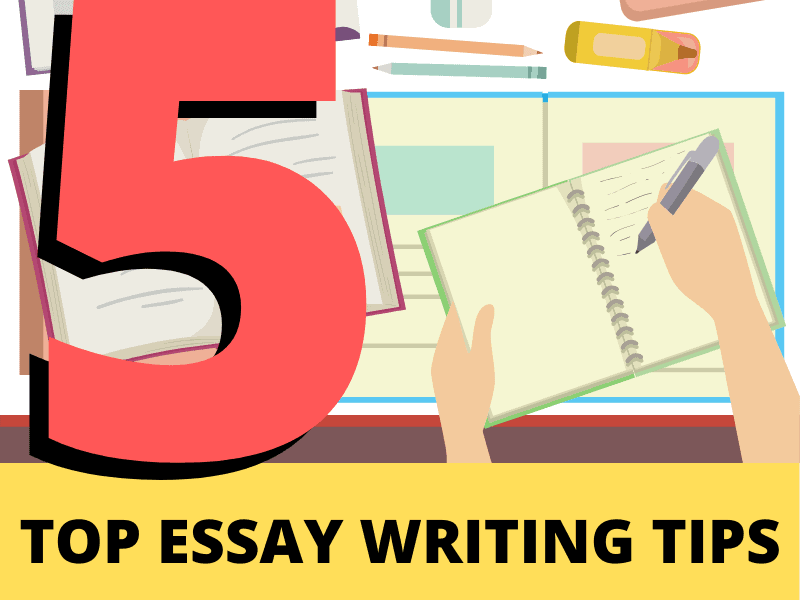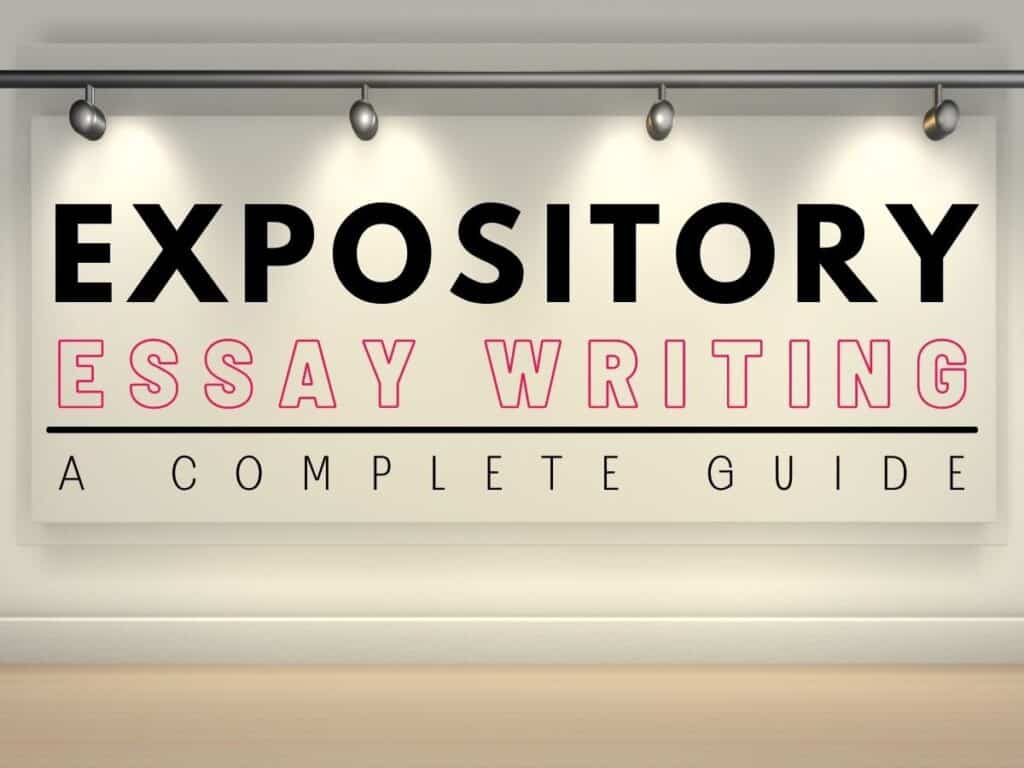
WHAT IS AN EXPOSITORY ESSAY?
An Expository essay ‘exposes’ information to the reader to describe or explain a particular topic logically and concisely.
The purpose of expository writing is to educate or inform the reader first and foremost.
Though the term is sometimes used to include persuasive writing, which exposes us to new ways of thinking, a true expository text does not allow the writer’s personal opinion to intrude into the text and should not be confused.
Expository Writing follows a structured format with an introduction, body paragraphs presenting information and examples, and a conclusion summarising key points and reinforcing the thesis. Common expository essays include process, comparison/contrast, cause and effect, and informative essays.
EXPOSITORY ESSAY STRUCTURE
TEXT ORGANIZATION Organize your thoughts before writing.
CLARITY Use clear and concise wording. There is no room for banter.
THESIS STATEMENT State position in direct terms.
TOPIC SENTENCE Open each paragraph with a topic sentence.
SUPPORTING DETAIL Support the topic sentence with further explanation and evidence.
LINK End each body paragraph by linking to the next.
EXPOSITORY ESSAY TYPES
PROCESS Tell your audience how to achieve something, such as how to bake a cake.
CAUSE & EFFECT Explore relationships between subjects, such as climate change and its impact.
PROBLEM & SOLUTION Explain how to solve a problem, such as improving physical fitness.
COMPARE & CONTRAST Compare and contrast two or more items, such as life in China life vs life in the United States or Australia.
DEFINITION Provides a detailed definition of a word or phrase, such as self-confidence.
CLASSIFICATION Organizes things into categories or groups, such as types of music.
STRUCTURE & FEATURES OF EXPOSITORY WRITING
While there are many types of expository essays, the basic underlying structure is the same. The Hamburger or 5-Paragraph Essay structure is an excellent scaffold for students to build their articles. Let’s explore the expository essay outline.
INTRODUCTION:
This is the top bun of the burger, and here the student introduces the exposition topic. This usually consists of a general statement on the subject, providing an essay overview. It may also preview each significant section, indicating what aspects of the subject will be covered in the text. These sections will likely relate to the headings and subheadings identified at the planning stage.
MAIN BODY:
If the introduction is the top bun of the burger, then each body paragraph is a beef patty. Self-contained in some regards, each patty forms an integral part of the whole.
EXPOSITORY PARAGRAPHS
Each body paragraph deals with one idea or piece of information. More complex topics may be grouped under a common heading, and the number of paragraphs will depend on the complexity of the topic. For example, an expository text on wolves may include a series of paragraphs under headings such as habitat, breeding habits, what they eat, etc.
Each paragraph should open with a topic sentence indicating to the reader what the paragraph is about. The following sentences should further illuminate this main idea through discussion and/or explanation. Encourage students to use evidence and examples here, whether statistical or anecdotal. Remind students to keep things factual – this is not an editorial piece for a newspaper!
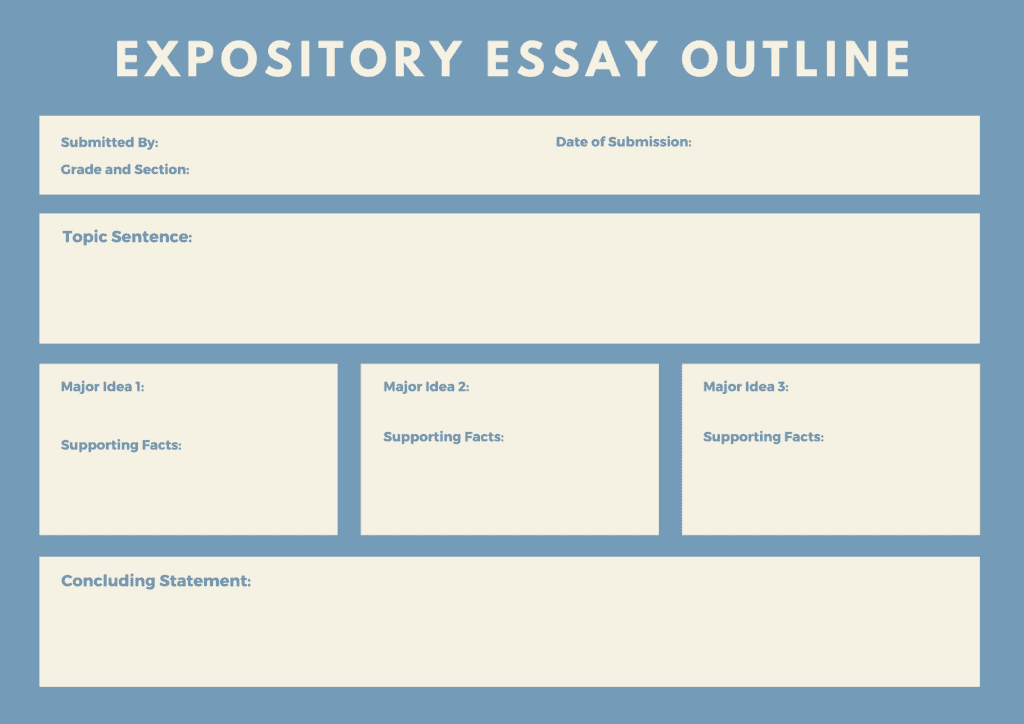
Expository writing is usually not the place for flowery flourishes of figurative imagery! Students should be encouraged to select a straightforward language that is easy for the reader to understand. After all, the aim here is to inform and explain, and this is best achieved with explicit language.
As we’ve seen, several variations of the expository essay exist, but the following are the most common features students must include.
TITLE:
The title should be functional. It should instantly inform the reader what they will learn about in the text. This is not the place for opaque poetry!
CONTENTS:
A table of contents in long essays will help the reader locate helpful information quickly. Usually, the page numbers found here will be linked to headings and subheadings to be found in the text.
HEADINGS / SUBHEADINGS:
These assist the reader in finding information by summarizing the content in their wording.
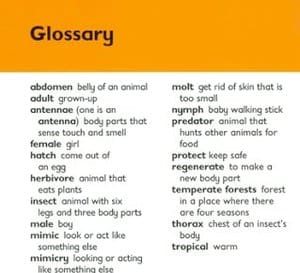
GLOSSARY:
Usually listed alphabetically, the glossary defines unusual or topic-specific vocabulary and is sometimes accompanied by pictures, illustrations etc.
INDEX:
The index lets the reader identify where to find specific information in longer texts. An index is much more detailed than a table of contents.
VISUAL FORMS OF INFORMATION
Expository essays sometimes support the text with visuals, such as:
- Pictures / Illustrations / Photographs:
These can be used to present a central idea or concept within the text and are often accompanied by a caption explaining what the image shows. Photographs can offer a broad overview or a close-up of essential details.

- Diagrams:
Diagrams are a great way to convey complex information quickly. They should be labelled clearly to ensure the reader knows what they are looking at.
- Charts and Graphs:
These are extremely useful for showing data and statistics in an easy-to-read manner. They should be labelled clearly and correspond to the information in the nearby text.
- Maps:
Maps may be used to explain where something is or was located.
THE ULTIMATE NONFICTION WRITING TEACHING RESOURCE
- 270 pages of the most effective teaching strategies
- 50+ digital tools ready right out of the box
- 75 editable resources for student differentiation
- Loads of tricks and tips to add to your teaching tool bag
- All explanations are reinforced with concrete examples.
- Links to high-quality video tutorials
- Clear objectives easy to match to the demands of your curriculum
Types of expository essay
There are many different types of expository texts (e.g. encyclopaedias, travel guides, information reports, etc.), but there are also various expository essays, with the most common being.
- Process Essays
- Cause and Effect Essays
- Problem and Solution Essays
- Compare and Contrast Essays
- Definition Essays
- Classification Essays
We will examine each of these in greater detail in the remainder of this article, as they have slight nuances and differences that make them unique. The graphic below explains the general structure for all text types from the expository writing family.
THE PROCESS ESSAY
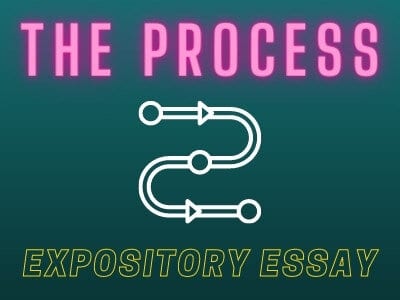
This how-to essay often takes the form of a set of instructions. Also known as a procedural text, the process essay has very specific features that guide the reader on how to do or make something.
To learn more about this type of writing, check out our information-packed article here.
Features of a process essay
Some of the main features of the process essay include:
- ‘How to’ title
- Numbered or bullet points
- Time connectives
- Imperatives (bossy words)
- List of resources
- Diagrams
Example Expository Process Essay:
Title: A Comprehensive Guide to Building Your Personal Website Introduction: In the today's digital society, creating a personal website can be an awesome experience for individuals of any age. Whether you aim to showcase your skills, share your interests, or establish an online presence, this step-by-step guide will take you through the process, from planning to the final launch. Step 1: Define Your Purpose and Content: Start by clarifying the purpose of your website and the content you want to feature. Consider showcasing your hobbies, projects, or creating a blog to share experiences and insights. Step 2: Choose a Platform: Opt for user-friendly website builders like WordPress, Wix, or Squarespace, especially if you have minimal coding experience. Explore their features and templates to find one that aligns with your vision. Many platforms offer free plans with basic features. Step 3: Set Up Your Account: After selecting a platform, sign up for an account, and choose a domain name (website address). Aim for a memorable name that reflects your content. Note that free plans may include platform branding in your domain. Step 4: Customize Your Website: Explore customization options, selecting a theme or template that suits your style. Tweak colors, fonts, and layouts to create a unique appearance. Experiment until you achieve a look and feel that aligns with your vision. Step 5: Add Content: Start populating your website with content, including text, images, and videos based on your chosen purpose. Organize content into pages or sections for easy navigation. Ensure your content is engaging and authentic. Step 6: Learn Basic SEO: Familiarize yourself with basic Search Engine Optimization (SEO) principles to enhance your website's visibility. Incorporate relevant keywords, optimize titles, and use alt text for images to improve accessibility. Step 7: Preview and Test: Before publishing, preview your website to ensure it looks and functions as intended. Test navigation, links, and multimedia elements to guarantee a seamless user experience. Make necessary adjustments based on your findings. Step 8: Publish Your Website: Once satisfied with your website's appearance and functionality, follow your platform's guidelines to publish it. Share your website's URL with your network to increase visibility. Conclusion: Building your personal website is an enriching journey regardless of your age. By defining your purpose, choosing a suitable platform, and customizing your content, you can create a digital space that reflects your interests and skills. Regularly update and refine your website to keep it dynamic and representative of your evolving experiences and passions.
THE CAUSE AND EFFECT ESSAY
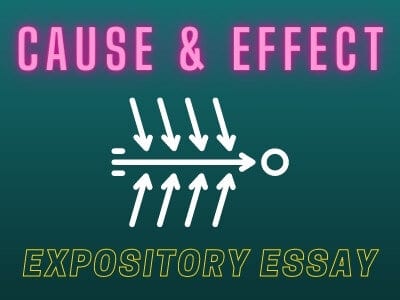
The purpose of a cause-and-effect essay is to explore the causal relationships between things. Essays like this often bring the focus back to a single cause. These essays frequently have a historical focus.
The text should focus on facts rather than assumptions as an expository essay. However, cause-and-effect essays sometimes explore hypothetical situations too.
Notes:
There are two main ways to structure a cause-and-effect essay.
The Block Structure presents all the causes first. The writer then focuses on the effects of these causes in the second half of the essay.
The Chain Structure presents each cause and then immediately follows with the effects it created.
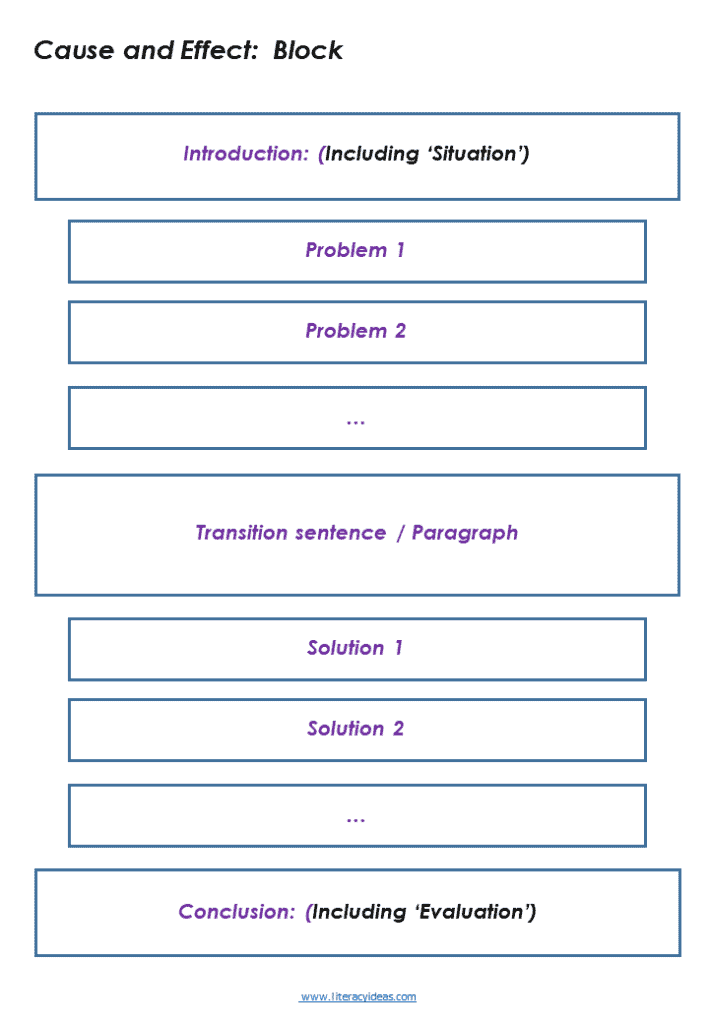
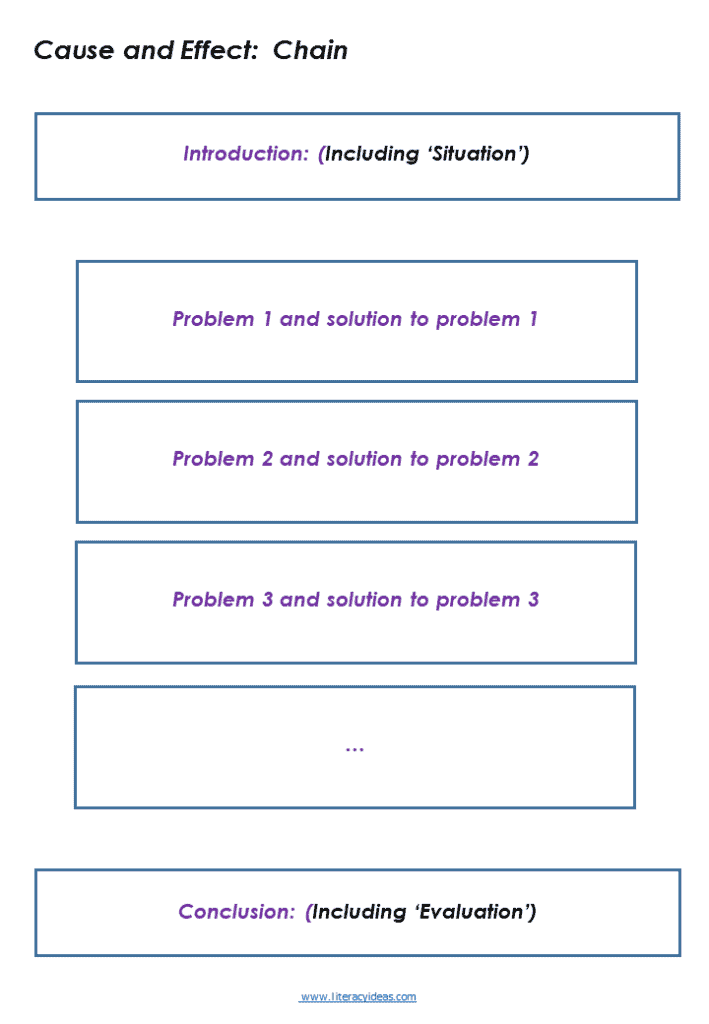
Example Expository Cause and Effect Essay:
Title: The Catalyst and Consequences: Hitler's Role in Initiating World War II Introduction: World War II stands as one of the darkest chapters in human history, marked by widespread devastation, loss of life, and unprecedented global conflict. Adolf Hitler, the leader of Nazi Germany, played a pivotal role in the outbreak of World War II. This essay will delve into the causes and effects of Hitler's actions, unraveling the intricate web that led to the initiation of one of the deadliest conflicts in the 20th century. **Causes:** 1. **Treaty of Versailles:** The Treaty of Versailles, signed in 1919, imposed harsh penalties on Germany after World War I. Hitler exploited the nation's resentment and discontent over the treaty's punitive measures, using it as a rallying point to garner support for his aggressive foreign policy. 2. **Expansionist Ambitions:** Hitler's expansionist ambitions sought to establish a Greater German Empire. His aggressive territorial pursuits, fueled by the desire for Lebensraum (living space), aimed to unite all German-speaking people under one state. His early invasions of Austria and Czechoslovakia foreshadowed more extensive territorial ambitions. 3. **Appeasement Policy:** The policy of appeasement by major European powers, particularly Britain and France, contributed to Hitler's sense of invincibility. The lack of significant resistance to his early aggressions, such as the remilitarization of the Rhineland and the annexation of Austria, emboldened Hitler to pursue further territorial gains. **Effects:** 1. **Invasion of Poland (1939):** The immediate cause of World War II was Hitler's invasion of Poland on September 1, 1939. This aggressive act prompted Britain and France to declare war on Germany, officially initiating the conflict. The invasion showcased Hitler's disregard for international treaties and highlighted the failure of diplomatic efforts to prevent war. 2. **Blitzkrieg Tactics:** Hitler's military strategy, known as Blitzkrieg or "lightning war," involved rapid and overwhelming attacks using combined forces of infantry, tanks, and air power. This strategy allowed Germany to swiftly conquer large territories in Europe, leading to the fall of Poland, Denmark, Norway, the Netherlands, Belgium, and France. 3. **Formation of Alliances:** Hitler's actions prompted the formation of alliances among nations opposed to Nazi aggression. The Allies, including the United States, the Soviet Union, and other European countries, united to counter the Axis powers led by Germany, Italy, and Japan. The alliances reshaped the geopolitical landscape, intensifying the scale and scope of the conflict. 4. **Holocaust and Genocidal Policies:** Hitler's ideology, rooted in anti-Semitism and racism, culminated in the Holocaust. The systematic extermination of six million Jews, along with millions of others deemed undesirable by Nazi ideology, represented one of the darkest aspects of World War II. The Holocaust left an indelible mark on history, shaping post-war international efforts to prevent genocide. Conclusion: Adolf Hitler's actions and ideologies were instrumental in instigating World War II. The causes, ranging from the Treaty of Versailles to Hitler's expansionist ambitions and the policy of appeasement, created a volatile mix that ultimately erupted into a global conflict. The effects of Hitler's aggression were profound, leading to widespread devastation, the reconfiguration of alliances, and the emergence of genocidal policies. Understanding the causes and effects of Hitler's role in starting World War II is crucial for comprehending the complexities of this pivotal historical period and the enduring lessons it imparts.
THE PROBLEM AND SOLUTION ESSAY
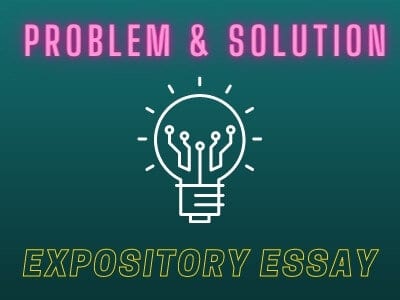
In this type of essay, the writer first identifies a problem and then explores the topic from various angles to ultimately propose a solution. It is similar to the cause-and-effect essay.
Notes:
While the problem and solution essay can use the block and chain structures as outlined above – substitute cause with problem and effect with a solution – it will also usually work through the following elements:
- Identifies a problem
- Contains a clear thesis statement
- Each paragraph has a topic sentence
- Supports with facts, examples, evidence
- The conclusion summarizes the main points
Suggested Title: What Can Be Done to Prevent Bullying in Schools?
Example Expository Problem and Solution Essay:
Title: Tackling the Bullying Mess: How We Can Stop It Together Introduction: Okay, so let's get real about this bullying thing in schools. It's seriously messing with people's lives, right? This essay is all about why it's a problem and what we, as a squad, can do to shut it down and make school a way better place. Problem: Bullying is everywhere, and it's not just the classic stuff - mean words, shoving, or whatever. Now, we've got this whole online bullying scene too. It's making school feel like this not-so-chill place where everyone's on edge. And, it's messing with our heads, making it hard for us to just be ourselves. Solution: 1. **Let's Get Educated:** Seriously, we all need to get woke about bullying. Schools need to run these programs that spill the tea on what bullying is, how it hurts, and how we can stop it. Knowing this stuff helps us be there for each other and stop the drama. 2. **Rules, Rules, Rules:** Schools need to lay down the law on bullying. Like, no more being wishy-washy about it. Clear rules with actual consequences will make bullies think twice. And, let's keep those rules updated, especially for the online drama. 3. **Slide into DMs - but for Real:** We need to make talking about bullying as easy as sliding into someone's DMs. Schools should set up a safe space where we can spill the tea about what's going down without worrying about getting shade thrown back at us. 4. **Mental Health Help, Please:** Bullying does a number on our heads, right? Schools need to have our backs with counseling and support groups. It's not just about surviving, it's about thriving after the bullying drama. 5. **We Got Each Other's Backs:** Let's be real friends and have each other's backs. Schools should set up cool programs where we can mentor each other or just be there for someone who needs it. No one should feel alone in this mess. 6. **Digital Street Smarts:** With all the online drama, we need a crash course on being street smart online. We've got to know how to handle the cyberbullying vibes and keep our online spaces positive. 7. **Team Up with the Crew:** Stopping bullying is a team sport. Schools, parents, cops, and all of us need to team up and say, "No more drama!" When we're all in, it's way easier to stop bullying in its tracks. Conclusion: Bullying is a big deal, but we're not backing down. By getting educated, setting rules, opening up about our feelings, getting mental health support, having each other's backs, being online smart, and teaming up with everyone around us, we can shut down the bullying mess. It's time to create a school vibe that's all about respect, kindness, and being there for each other. Let's make it happen! ✌️
THE COMPARE AND CONTRAST ESSAY

In this type of essay, students evaluate the similarities and differences between two or more things, ideas, people, etc. Usually, the subjects will belong to the same category.
Notes:
The compare-and-contrast expository essay can be organized in several different ways. Three of these are outlined below.
In the three structures outlined, it is assumed that two subjects are being compared and contrasted. Of course, the precise number of paragraphs required in the text will depend on the number of points the student wishes to make and the number of subjects being compared and contrasted.
Suggested Title: In-Class or Remote Learning: Which Is Best?



Title: A Comparative Analysis of Homeschooling and Traditional School Education Introduction: The choice between homeschooling and traditional school education is a critical decision for many families, each approach offering unique advantages and disadvantages. This essay will explore and compare the key aspects of homeschooling and learning at school, shedding light on the distinct characteristics of both educational methods. Body: **1. Academic Flexibility:** *Homeschooling:* One of the primary advantages of homeschooling is the flexibility it offers in tailoring the curriculum to the individual needs and pace of the student. Homeschooled students can delve into specific subjects more deeply or spend additional time on areas that require extra attention. *Traditional School:* In contrast, traditional schools adhere to a standardized curriculum and set schedules. While this structure ensures a comprehensive education, it may not cater to the specific learning pace or interests of each student. **2. Socialization:** *Homeschooling:* Critics of homeschooling often raise concerns about socialization. Homeschooled students, however, have ample opportunities to engage with peers through community activities, sports, and group learning experiences. *Traditional School:* Traditional schools inherently provide a social environment, fostering interactions with diverse groups of peers. However, this setting may not always be conducive to individualized attention or accommodating different social preferences. **3. Individualized Attention:** *Homeschooling:* One of the major benefits of homeschooling is the personalized attention students receive. With a low student-to-teacher ratio (often one-to-one), educators or parents can adapt teaching methods to suit the learning style and preferences of each student. *Traditional School:* In traditional schools, larger class sizes can limit individualized attention. Teachers may face challenges addressing the unique needs of every student, potentially leaving some learners struggling or feeling overlooked. **4. Structure and Routine:** *Homeschooling:* Homeschooling allows for a more flexible daily schedule, accommodating the rhythms of individual families. This flexibility can be beneficial for students who thrive outside the constraints of a traditional school timetable. *Traditional School:* Traditional schools follow a set schedule, providing students with a structured routine that mimics the expectations of the working world. This structure can instill discipline and time-management skills. **5. Parental Involvement:** *Homeschooling:* Homeschooling necessitates a significant commitment from parents who act as both educators and facilitators. The strong parental involvement can strengthen family bonds and foster a more hands-on approach to education. *Traditional School:* In traditional schools, the responsibility for education is shared between teachers and parents. While parents play a crucial role in supporting their child's education, the primary responsibility for teaching falls on professional educators. Conclusion: In weighing the advantages and disadvantages of homeschooling versus traditional school education, families must consider their individual priorities and the needs of their children. Homeschooling offers academic flexibility, individualized attention, and strong parental involvement, while traditional schools provide a structured environment, socialization opportunities, and a standardized curriculum. Ultimately, the decision between homeschooling and traditional schooling is a personal one, influenced by the educational philosophy, lifestyle, and goals of each family.
DEFINITION ESSAYS
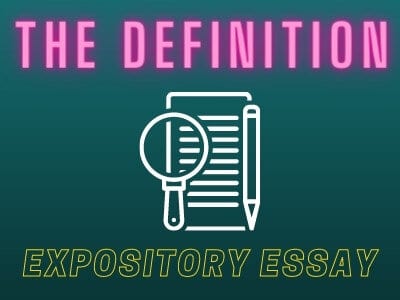
This type of essay provides a detailed description and definition of a word or phrase. It can be a concrete term, such as car or glass, or a more abstract concept, such as love or fear.
Notes:
A definition essay comprehensively explains a term’s purpose and meaning. It will frequently contain some or all of the following elements:
- A definition of the term
- An analysis of its meaning
- The etymology of the term
- A comparison to related terms
- Examples to illustrate the meaning
- A summary of the main points
Example Expository Definition Essay:
Title: Unveiling the Essence of Beauty: An Expository Definition Introduction: Beauty, an elusive and subjective concept, has intrigued philosophers, artists, and thinkers throughout history. It transcends mere aesthetics and encompasses a multifaceted range of qualities that captivate and resonate with the human spirit. This essay seeks to explore and define the essence of beauty, recognizing its fluid nature and the diverse perspectives that shape our understanding. Body: **1. Aesthetic Pleasure:** *Definition:* At its core, beauty often begins with aesthetic pleasure. It refers to the visual or sensory appeal that an object, person, or experience elicits. This can include symmetry, harmony, and the pleasing arrangement of colors, shapes, or sounds that evoke a sense of delight. *Example:* A sunset over a tranquil landscape, where warm hues blend seamlessly with the horizon, creating a breathtaking spectacle of natural beauty. **2. Inner Radiance:** *Definition:* Beauty extends beyond the superficial and embraces qualities that radiate from within. Inner beauty is characterized by qualities such as kindness, compassion, and authenticity, shaping one's character and influencing interactions with the world. *Example:* A person whose genuine kindness and empathy create an aura of warmth, leaving a lasting impression on those they encounter. **3. Emotional Resonance:** *Definition:* Beauty often establishes a deep emotional connection. It can evoke a range of emotions, from joy and admiration to awe and contemplation. The emotional resonance of beauty extends beyond the surface, striking a chord within our hearts and souls. *Example:* A piece of art or music that elicits profound emotions, transcending the physical form and resonating with the observer or listener on a profound level. **4. Cultural and Historical Context:** *Definition:* Beauty is highly influenced by cultural and historical contexts, reflecting the values and ideals of a society at a given time. Different cultures and historical periods define beauty in distinct ways, showcasing the evolving nature of this concept. *Example:* The Renaissance period celebrated idealized representations of the human form in art, emphasizing classical proportions and symmetry as markers of beauty. **5. Subjectivity and Diversity:** *Definition:* Beauty is inherently subjective, varying from person to person based on individual preferences, experiences, and cultural backgrounds. It celebrates diversity, acknowledging that what one finds beautiful may differ from another's perspective. *Example:* The diverse standards of beauty found in different cultures, where features such as body shape, skin color, and facial characteristics can vary widely in terms of societal ideals. Conclusion: In conclusion, beauty is a nuanced and complex concept that defies a singular definition. It encompasses aesthetic pleasure, inner radiance, emotional resonance, cultural and historical contexts, and the inherent subjectivity and diversity of human experiences. Beauty, in its many forms, continues to be a source of inspiration, connection, and contemplation for individuals across time and cultures, reminding us of the richness and diversity inherent in our perceptions of the world.
CLASSIFICATION ESSAYS
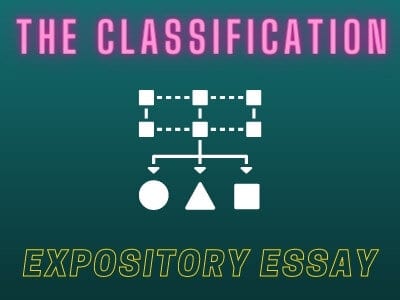
Like definition essays, a classification essay sorts or organizes things into various groups or categories and explains each group or category in detail.
Notes:
Classification essays focus on:
- Sorting things into functional categories
- Ensuring each category follows a common organizing principle
- Provides examples that illustrate each category.
Example Expository Classification Essay:
Title: Exploring the Spectrum: Classifying Vacation Destinations Introduction: Vacation destinations come in a dazzling array, each offering unique experiences and atmospheres. From serene beach escapes to vibrant urban adventures, the world is a treasure trove of vacation possibilities. This essay seeks to classify vacation destinations into distinct categories based on their defining features and the experiences they provide. Body: **1. Tranquil Retreats:** *Characteristics:* These destinations are characterized by their peaceful surroundings, often featuring pristine beaches, lush landscapes, and a relaxed pace of life. Tranquil retreats aim to provide a serene escape from the hustle and bustle of everyday life. *Examples:* - Maldives - Bali - Santorini **2. Urban Excursions:** *Characteristics:* Urban vacation destinations are bustling metropolises that offer a dynamic blend of culture, entertainment, and diverse attractions. The focus here is on exploring city life, immersing oneself in the local scene, and discovering the rhythm of a vibrant urban environment. *Examples:* - New York City - Tokyo - Paris **3. Adventure Hotspots:** *Characteristics:* For adrenaline junkies and nature enthusiasts, adventure hotspots are the go-to destinations. These places boast thrilling activities such as hiking, skiing, or water sports, often set against breathtaking natural landscapes. *Examples:* - Queenstown, New Zealand - Interlaken, Switzerland - Costa Rica (for rainforest adventures) **4. Cultural Immersion:** *Characteristics:* Cultural immersion destinations focus on providing travelers with a rich and authentic cultural experience. Visitors can explore historical sites, indulge in local cuisine, and engage with the traditions and customs of the region. *Examples:* - Kyoto, Japan - Marrakech, Morocco - Rome, Italy **5. Family-Friendly Escapes:** *Characteristics:* Family-friendly vacation spots cater to the needs and interests of all family members. These destinations often include amusement parks, kid-friendly attractions, and a range of activities suitable for different age groups. *Examples:* - Orlando, Florida - Disneyland (California, Paris, Tokyo, etc.) - Gold Coast, Australia **6. Wellness and Spa Retreats:** *Characteristics:* Wellness and spa retreats are designed for relaxation and rejuvenation. These destinations focus on promoting physical and mental well-being, offering spa treatments, yoga retreats, and healthy culinary experiences. *Examples:* - Bali (Ubud) - Sedona, Arizona - Tuscany, Italy Conclusion: In the vast landscape of vacation destinations, each category caters to specific preferences and interests. Whether one seeks tranquility, cultural exploration, adventure, or family-friendly fun, the world offers a diverse range of vacation options. Choosing the right destination depends on individual tastes, and each category promises a unique and memorable experience for those seeking a well-deserved break.

One of the best ways to understand the different features of expository essays is to see them in action. The sample essay below is a definition essay but shares many features with other expository essays.

EXPOSITORY WRITING PROMPTS
Examples of Expository Essay Titles
Expository essay prompts are usually pretty easy to spot.
They typically contain keywords that ask the student to explain something, such as “define,” “outline,” “describe,” or, most directly of all, “explain.”
This article will examine the purpose of an expository essay and its structure. It will also examine the primary language and stylistic features of this vital text type.
After this, we’ll explore five distinct tips for helping your students get the most out of writing their expository essays.
Expository Essays vs Argumentative Essays
Expository essays are often confused with their close cousin, the argumentative essay. Still, it’s easy to help students distinguish between the two by quickly examining their similarities and differences.
In an expository essay, students will attempt to write about a thing or a concept neutrally and objectively, unlike an argumentative essay where the writer’s opinions permeate the text throughout. Simple as it sounds, this may take some doing for some students as it requires the writer to refine their personal voice almost out of existence!
Luckily, choosing the correct viewpoint from which to write the essay can go a long way to helping students achieve the desired objectivity. Generally, students should write their expository essays from the third-person perspective.
Contrastingly, argumentative essays are subjective in nature and will usually be written from the first-person perspective as a result.
In an expository essay, the text’s prime focus is the topic rather than the writer’s feelings on that topic. For the writer, disassociating their personal feelings on a topic is much easier when they’re a step removed from the narration by using the third-person POV rather than the first-person POV.
Expository Essay Tips
Follow these top tips from the experts to craft an amazing expository essay.
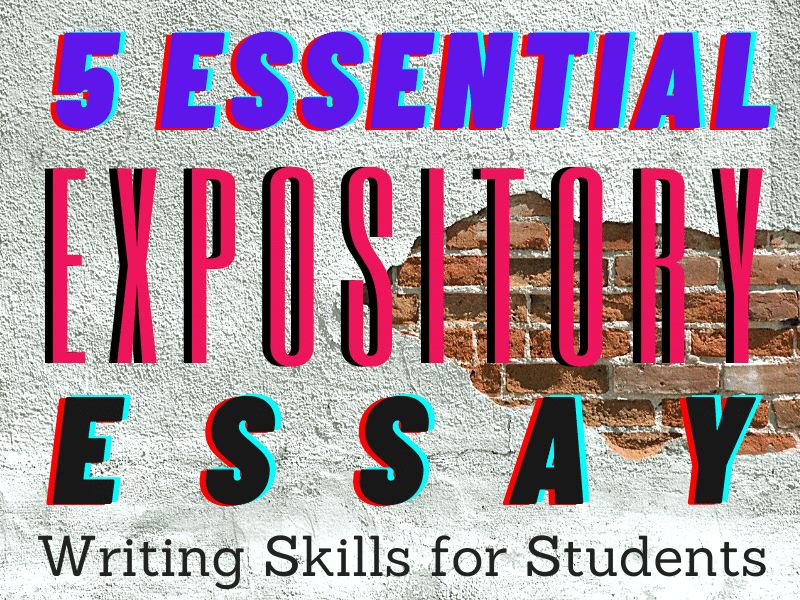
Tip #1: Choose the Right Tool for the Job

Surprising as it may seem, not all expository essays are created equal.
In fact, there are several different types of expository essays, and our students must learn to recognize each and choose the correct one for their specific needs when producing their own expository essays.
To do this, students will need to know the 5 types of expository essays:
- The Cause and Effect Essay: This type of essay requires that the writer explain why something happened and what occurred due to that event and subsequent events. It explores the relationship between people, ideas, events, or things and other people, ideas, events, or things.
- The Compare and Contrast Essay: In a compare and contrast essay, the writer examines the similarities and differences between two subjects or ideas throughout the body of the piece and usually brings things together in an analysis at the end.
- The Descriptive Essay: This is a very straightforward expository essay with a detailed description or explanation of a topic. The topic may be an event, place, person, object, or experience. This essay’s direct style is balanced with the freedom of the writer can inject some of their creativity into the description.
- The Problem and Solution Essay: In this expository essay, the student will work to find valid solutions to a specific problem or problem.
- The Process Essay: Also called a how-to essay, this essay type is similar to instruction writing, except in essay form. It provides a step-by-step procedure breakdown to teach the reader how to do something.
When choosing a specific topic to write about, students should consider several factors:
● Do they know the topic well enough to explain the ins and outs of the subject to an unfamiliar audience?
● Do they have enough interest in this topic to sustain thorough research and writing about it?
● Is enough relevant information and credible sources available to fuel the student’s writing on this topic?
Tip #2: Research the Topic Thoroughly
Regardless of which type of expository essay your students are working on, they must approach the research stage of the writing process with diligence and focus. The more thorough they are at the research stage, the smoother the remainder of the writing process will be.
A common problem for students while researching is that sometimes they don’t have a clear understanding of the objective of their research. They lack a clear focus on their efforts.
Research is not mindlessly scanning documents and scrawling occasional notes. As with any part of the writing process, it begins with determining clear objectives.
Often, students will start the research process with a broad focus, and as they continue researching, they will naturally narrow their focus as they learn more about the topic.
Take the time to help students understand that writing isn’t only about expressing what we think; it’s also about discovering what we think.
When researching, students should direct their efforts to the following:
- Gather Supporting Evidence: The research process is not only for uncovering the points to be made within the essay but also the evidence to support those points. The aim here is to provide an objective description or analysis of the topic; therefore, the student will need to gather relevant supporting evidence, such as facts and statistics, to bolster their writing. Usually, each paragraph will open with a topic sentence, and subsequent sentences in the paragraph will focus on providing a factual, statistical, and logical analysis of the paragraph’s main point.
- Cite Sources: It’s an essential academic skill to be able to cite sources accurately. There are several accepted methods of doing this, and you must choose a citation style appropriate to your student’s age, abilities, and context. However, whatever style you choose, students should get used to citing any sources they use in their essays, either in the form of embedded quotations, endnotes, or bibliography – or all three!
- Use Credible Sources: The Internet has profoundly impacted knowledge sharing as the Gutenberg Press did almost 600 years ago. It has provided unparalleled access to the sum total of human knowledge as never before, with each student having a dizzying number of sources available at their fingertips. However, we must ensure our students understand that not all sources are created equal. Encourage students to seek credible sources in their research and filter out the more dubious sources. Some questions students can ask themselves to help determine a source’s credibility include:
● Have I searched thoroughly enough to find the most relevant sources for my topic?
● Has this source been published recently? Is it still relevant?
● Has the source been peer-reviewed? Have other sources confirmed this source?
● What is the publication’s reputation?
● Is the author an expert in their field?
● Is the source fact-based or opinion-based?
Tip #3: Sketch an Outline
Every kid knows you can’t find the pirate treasure without a map, which is true of essay writing. Using their knowledge of the essay’s structure, students start whipping their research notes into shape by creating an outline for their essay.
The 5-paragraph essay or ‘Hamburger’ essay provides a perfect template for this.
Students start by mapping out an appealing introduction built around the main idea of their essay. Then, from their mound of research, they’ll extract their most vital ideas to assign to the various body paragraphs of their text.
Finally, they’ll sketch out their conclusion, summarize their essay’s main points, and, where appropriate, make their final statement on the topic.
Tip #4: Write a Draft
Title chosen? Check! Topic researched? Check! Outline sketched? Check!
Well, then, it’s time for the student to begin writing in earnest by completing the first draft of their essay.
They’ll already have a clear idea of the shape their essay will take from their research and outlining processes, but ensure your students allow themselves some leeway to adapt as the writing process throws up new ideas and problems.
That said, students will find it helpful to refer back to their thesis statement and outline to help ensure they stay on track as they work their way through the writing process towards their conclusions.
As students work through their drafts, encourage them to use transition words and phrases to help them move smoothly through the different sections of their essays.
Sometimes, students work directly from an outline as if on a checklist. This can sometimes be seen as the finished essay resembling Frankenstein. That is an incongruous series of disparate body parts crudely stitched together.
Learning to use transitions effectively will help students create an essay that is all of a whole, with all the joins and seams sanded and smoothed from view.
Tip #5: Edit with a Fresh Pair of Eyes

Once the draft is complete, students enter the final crucial editing stage.
But, not so hasty! Students must pencil in some time to let their drafts ‘rest’. If the editing process occurs immediately after the student finishes writing their draft, they’ll likely overlook much.
Editing is best done when students have time to gain a fresh perspective on their work. Ideally, this means leaving the essay overnight or over a few nights. However, practically, this isn’t always possible. Usually, though, it will be possible for students to put aside their writing for a few hours.
With the perspective that only time gives, when returning to their work, students can identify areas for improvement that they may have missed. Some important areas for students to look at in the editing process include:
- Bias: Students need to remember the purpose of this essay is to present a balanced and objective description of the topic. They need to ensure they haven’t let their own personal bias slip through during the writing process – an all too easy thing to do!
- Clarity: Clarity is as much a function of structure as language. Students must ensure their paragraphs are well organized and express their ideas clearly. Where necessary, some restructuring and rewriting may be required.
- Proofread: With stylistic and structural matters taken care of, it’s now time for the student to shift their focus onto matters of spelling, vocabulary choice, grammar, and punctuation. This final proofread represents the last run-through of the editing process. It’s the students’ final chance to catch mistakes and errors that may bias the assessor (aka You!) against the effectiveness of the piece of writing. Where the text has been word-processed, the student can enlist inbuilt spelling and grammar checkers to help. Still, they should also take the time to go through each line word by word. Automatic checkers are a helpful tool, but they are a long way from infallible, and the final judgement on a text should employ the writer’s own judgement.
Expository essays are relatively straightforward pieces of writing. By following the guidelines mentioned above and practising them regularly, students can learn to produce well-written expository essays quickly and competently.
Explaining and describing events and processes objectively and clearly is a useful skill that students can add to their repertoire. Although it may seem challenging at first, with practice, it will become natural.
To write a good expository essay, students need a good understanding of its basic features and a firm grasp of the hamburger essay structure. As with any writing genre, prewriting is essential, particularly for expository writing.
Since expository writing is designed primarily to inform the reader, sound research and note-taking are essential for students to produce a well-written text. Developing these critical skills is an excellent opportunity for students through expository writing, which will be helpful to them as they continue their education.
Redrafting and editing are also crucial for producing a well-written expository essay. Students should double-check facts and statistics, and the language should be edited tightly for concision.
And, while grading their efforts, we might even learn a thing or two ourselves!
⭐⭐⭐⭐⭐ (92 Reviews)
ARTICLES RELATED TO EXPOSITORY ESSAY WRITING






















